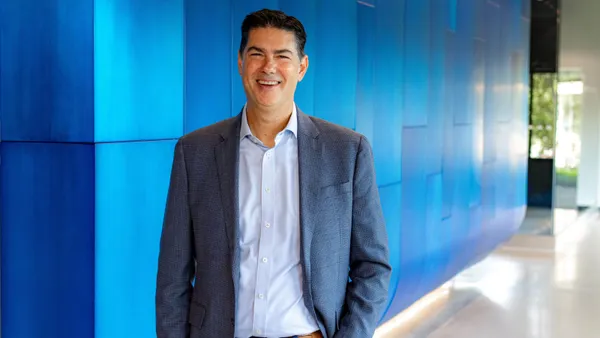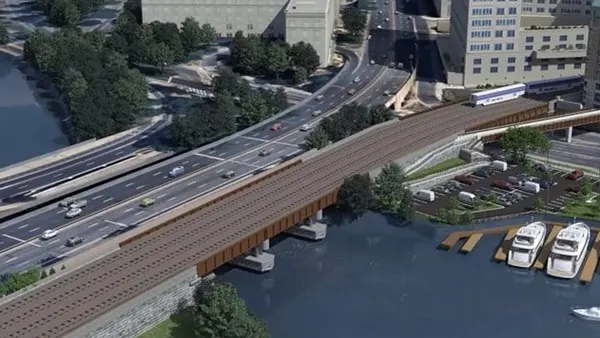Dive Brief:
-
Strong activity in the nonbuilding sector drove the value of construction starts up 6% from June to a seasonally adjusted rate of $728.1 billion in July, according to Dodge Data & Analytics.
-
Public works led the nonbuilding sector in pushing the increase. A 7% drop-off in nonresidential construction was countered with an 8% rise in the residential sector. The value of year-to-date starts was down 1% to $411.9 billion, primarily due to a 44% drop in electric utility and gas plant construction.
-
Meanwhile, Dodge's Momentum Index, which indicates future nonresidential construction work, fell 3.3% from June to July due to a decline in institutional planning. However, the index is ahead by 6.9% from a year ago, suggesting continued growth is likely.
Dive Insight:
The construction industry has its collective eye on public works and transportation infrastructure projects — and the possibility of more to come with President Donald Trump's $1 trillion infrastructure spending program. Yet there remains a considerable lack of detail from the administration, namely around how such a massive effort is to be funded.
During the campaign, President Donald Trump vowed to make significant inroads in modernizing and repairing ports, highways, bridges and other public assets. However, in his 2018 budget request, he took a knife to U.S. Department of Transportation discretionary funding and also killed popular grant programs, saying that states are too reliant on the federal government to finance projects that have little or no significant national impact.
The administration has, however, offered up plans to help the smaller projects that would have otherwise benefited from the USDOT dollars, such as priority funding for rural communities and an expansion of low-interest loan programs like those authorized by the Transportation Infrastructure Finance and Innovation Act (TIFIA). In July, Congress heard testimony from TIFIA loan recipients. Several said the program's favorable interest rates and terms had made their local infrastructure projects possible. They also suggested lawmakers could do more outreach and make the loans more accessible.
The Environmental Protection Agency now offers a similar loan program for water-related infrastructure projects via the Water Infrastructure Finance and Innovation Act (WIFIA). Last month, the EPA announced that it had chosen 12 projects, ranging from wastewater treatment to waste recycling, to apply for the first-ever WIFIA loans.












